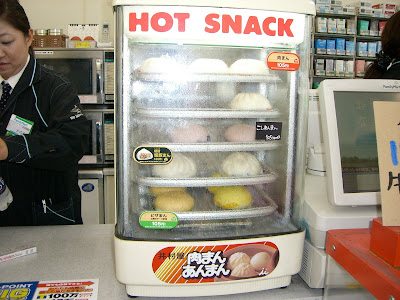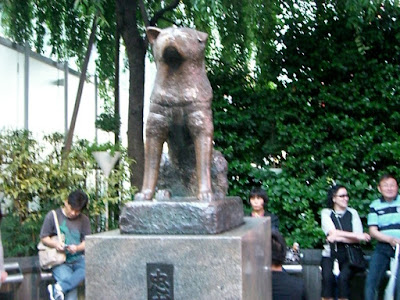Edo Tokyo Museum
I went to the Edo Tokyo Museum yesterday with Monica and Michiko (two of my favorite people). We took the train to meet Michiko all by ourselves. Here are some things we past on our way there. This was one of the most interesting museums I have been to in a long time and I couldn't read most of the signs on the exhibits. It told of the history of old Tokyo and how it got to be the way it is now. There were a lot of things that were similar to American History, the industrialization and such, but there were so many exhibits that were just gorgeous and telling of the times. I took a lot of pictures. I am sorry my blog entries are shorter then when my trip began but my trip is winding down and my adventures are tiring. I got tired, hot and somewhat less motivated. I have had such a rich experience both with cultural differences and with my family. I value both of them. I see the Japanese culture more clearly and I see my family dynamics more clearly. It is weird aging and watching both your children grow up to who ever they become and being proud of them. I leave tomorrow with mixed emotions. I am going back to my house, dog and life in small town America (a place I chose to live).
One of my favorite foods:

The Bicycle Parking Lot

The Edo-Tokyo Museum is centerd on a permanent exhibit, which includes displays featuring both original artifacts and reproductions, as well as 55 large-scale replicas including Nihonbashi Bridge. The exhibits reveal the history of the city and the life and culture of the people who lived there. The Museum sponsors special exhibits, lecture series, and other events, and makes its halls, lecture rooms and other facilities available to the public for a variety of cultural activities.
And in Tokyo Metropolitan Koganei Park, the Edo-Tokyo Tatemono-En is created as a branch of the Edo-Tokyo Museum. In the Edo-Tokyo Tatemono-En, an open-air architectual museum, buildings which have cultural value but cannot be preserved in their original locations are moved to be rebuilt, restored, preserved, and put on public display. Inside the buildings are exhibits of folklore materials and everyday objects that give a glimpse of life as it was once lived in buildings such as these and that help provide a better understanding of Tokyo's changing popular culture and lifestyles.
Purpose
The Edo-Tokyo Museum is to preserve the historic heritage of the city of Tokyo and its precursor Edo continuing for 400 years. The Museum hopes to contribute to the creation of a new culture that will enable the city's past to live on into the future.
Here are a few pictures:















Kimonos and wigs





One of my favorite foods:

The Bicycle Parking Lot

The Edo-Tokyo Museum is centerd on a permanent exhibit, which includes displays featuring both original artifacts and reproductions, as well as 55 large-scale replicas including Nihonbashi Bridge. The exhibits reveal the history of the city and the life and culture of the people who lived there. The Museum sponsors special exhibits, lecture series, and other events, and makes its halls, lecture rooms and other facilities available to the public for a variety of cultural activities.
And in Tokyo Metropolitan Koganei Park, the Edo-Tokyo Tatemono-En is created as a branch of the Edo-Tokyo Museum. In the Edo-Tokyo Tatemono-En, an open-air architectual museum, buildings which have cultural value but cannot be preserved in their original locations are moved to be rebuilt, restored, preserved, and put on public display. Inside the buildings are exhibits of folklore materials and everyday objects that give a glimpse of life as it was once lived in buildings such as these and that help provide a better understanding of Tokyo's changing popular culture and lifestyles.
Purpose
The Edo-Tokyo Museum is to preserve the historic heritage of the city of Tokyo and its precursor Edo continuing for 400 years. The Museum hopes to contribute to the creation of a new culture that will enable the city's past to live on into the future.
Here are a few pictures:















Kimonos and wigs








Comments
Post a Comment